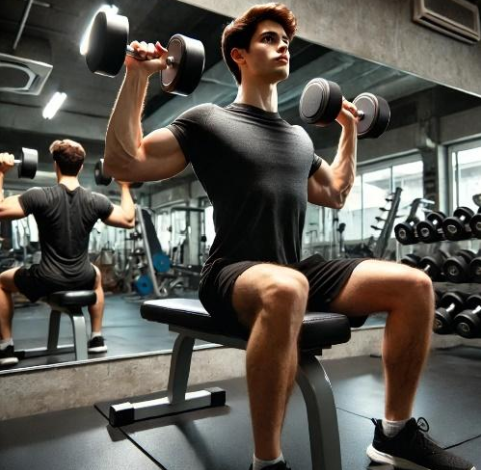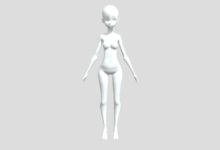Lift Right: Avoid These 5 Lateral Raise Mistakes for Powerful Shoulders

The lateral raise is a staple in any shoulder workout routine, designed to target the deltoids and help you build bigger, stronger shoulders. It’s a seemingly simple movement, but perfecting the technique is crucial for reaping the full benefits and avoiding injury. Many gymgoers make mistakes when performing lateral raises, which can hinder progress or lead to discomfort. In this blog, we’ll explore the five most common mistakes to avoid when performing lateral raises and how you can optimize your form for impressive shoulder gains.
Using Too Much Weight
One of the most common mistakes in lateral raises is lifting too much weight. While it may feel impressive to stack on heavier dumbbells, using excess weight can shift the focus away from your shoulders and onto other muscle groups like the traps or lower back. This diminishes the exercise’s overall efficiency and heightens the potential for injury.
What to do instead: Start with lighter weights that allow you to maintain proper form throughout the movement. Focus on feeling the contraction in your shoulders rather than simply moving the weight. Gradually increase the weight as your strength improves, but always prioritize form over numbers.
For example, the Spirit Fitness Lateral Raise machine is a great tool to help you maintain control with adjustable resistance, allowing you to focus on the targeted muscles without overloading other areas.
Swinging or Jerking the Weights
Using momentum to swing the weights up is another common mistake during lateral raises. This usually happens when someone is trying to lift too heavy or perform the exercise too quickly. Swinging the weights takes tension off the shoulders and transfers it to other muscles, defeating the purpose of the exercise.
What to do instead: Perform the movement in a slow and controlled manner. Keep your arms slightly bent and raise the dumbbells to shoulder height, pausing briefly at the top of the movement before lowering them back down slowly. This controlled motion ensures that your deltoids do the work and keeps momentum out of the equation. The Spirit Fitness Lateral Raise machine also allows you to control the movement more effectively, reducing the temptation to rely on momentum.
Lifting the Arms Too High
Many people lift their arms too high during lateral raises, going beyond shoulder level. While this might seem like a way to increase the intensity of the exercise, lifting the arms too high can engage the traps and upper back muscles instead of isolating the deltoids. This can also put unnecessary stress on the shoulder joints, increasing the risk of injury.
What to do instead: Raise your arms just until they are parallel to the floor. This keeps the tension on the deltoids, ensuring they are the primary muscle group doing the work. You should feel a strong contraction in your shoulders at this height without straining your neck or traps. Machines like the Spirit Fitness are designed to provide resistance within the optimal range of motion, helping you avoid lifting your arms too high.
Improper Elbow Position
Another common error is improper elbow positioning during the lateral raise. Some lifters keep their arms completely straight, while others bend their elbows too much. Either extreme can reduce the effectiveness of the movement or place undue strain on the elbows and wrists.
What to do instead: Your elbows should be slightly bent throughout the movement, mimicking a “soft” bend. This bend allows for a more natural range of motion and takes the stress off the joints while keeping the focus on your deltoids. Make sure your elbows lead the movement, with your wrists following, as this ensures proper activation of the shoulder muscles.
The Spirit Fitness Lateral Raise machine helps guide your arms into the correct position, with adjustable handles that accommodate different user sizes and body mechanics.
Neglecting the Eccentric Phase
The eccentric phase of the lateral raise, or the lowering portion of the movement, is just as important as the lifting phase. Many people focus only on lifting the weight and let gravity do the work on the way down. This reduces the time under tension for your shoulder muscles and limits your strength gains.
What to do instead: Pay attention to the eccentric phase by lowering the weights slowly and with control. Aim to take at least 2-3 seconds to bring the weights back down to the starting position. This increases the time under tension for your shoulders, helping to build more strength and muscle over time.
The Spirit Fitness Lateral Raise machine offers smooth, controlled resistance that allows you to focus on both the lifting and lowering phases of the exercise.
Conclusion
Mastering the lateral raise is key to developing strong, well-rounded shoulders. By avoiding these common mistakes—using too much weight, swinging the weights, lifting the arms too high, improper elbow positioning, and neglecting the eccentric phase—you can ensure that you’re getting the most out of this powerful shoulder exercise. Take the time to focus on your technique, and you’ll notice improved shoulder strength and size in no time. Remember, quality always trumps quantity when it comes to lateral raises. Lift smarter, not harder!






